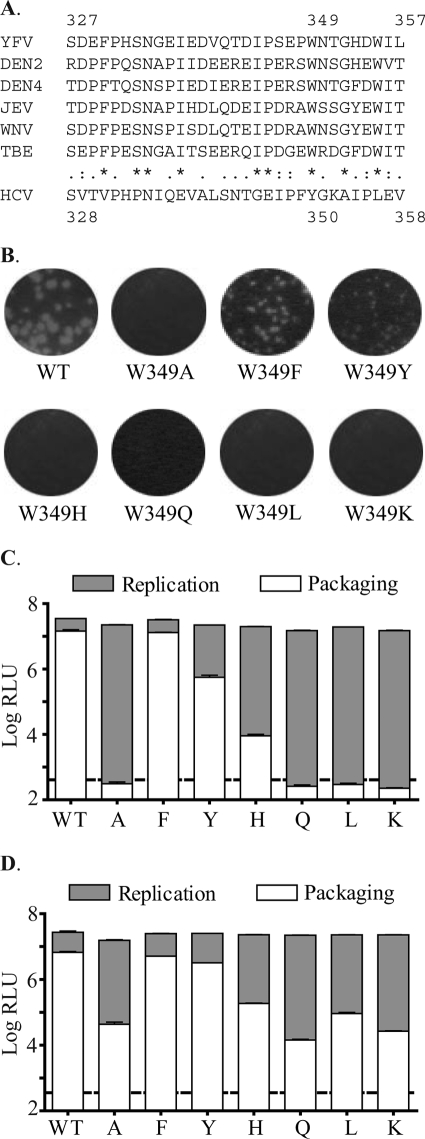FIG. 5.
An aromatic amino acid is required at position 349. (A) Multiple sequence alignment of NS3 protein from flaviviruses and HCV, showing the region including the solvent-accessible loop in the helicase domain of NS3. Identical residues are denoted by an asterisk, conserved residues are indicated by double dots, and partially conserved residues are indicated by single dots. JEV, Japanese encephalitis virus; TBE, tick-borne encephalitis virus; HCV, hepatitis C virus genotype 1a H77 strain. (B) Plaque phenotype analysis of YF23 containing W349 substitutions. Plaque assay was performed using either WT YF23 or YF23 containing W349 substitutions as described previously. (C) Replication and packaging of YF-R.luc2A-RP containing W349 substitutions in BHK cells. (D) trans-complementation of YF-R.luc2A-RP containing W349 mutations by use of BHK-REP cells. Luciferase activity of YF-R.luc2A-RP replicon transcripts containing NS3 mutations in BHK or BHK-REP cells was measured at various time points. The gray bars represent luciferase activity at 36 h postelectroporation. Packaging assay was performed as before, and the luciferase activity of PIPs is represented by the white bars. The wild-type YF-R.luc2A-RP replicon is denoted by WT, and W349 mutations are denoted by one-letter codes for the specific amino acid substitutions. Luciferase activity is indicated as the log of RLU. The dashed line indicates mock levels of packaging. Data represent averages of the results of three experiments. The error bars indicate standard deviations.

